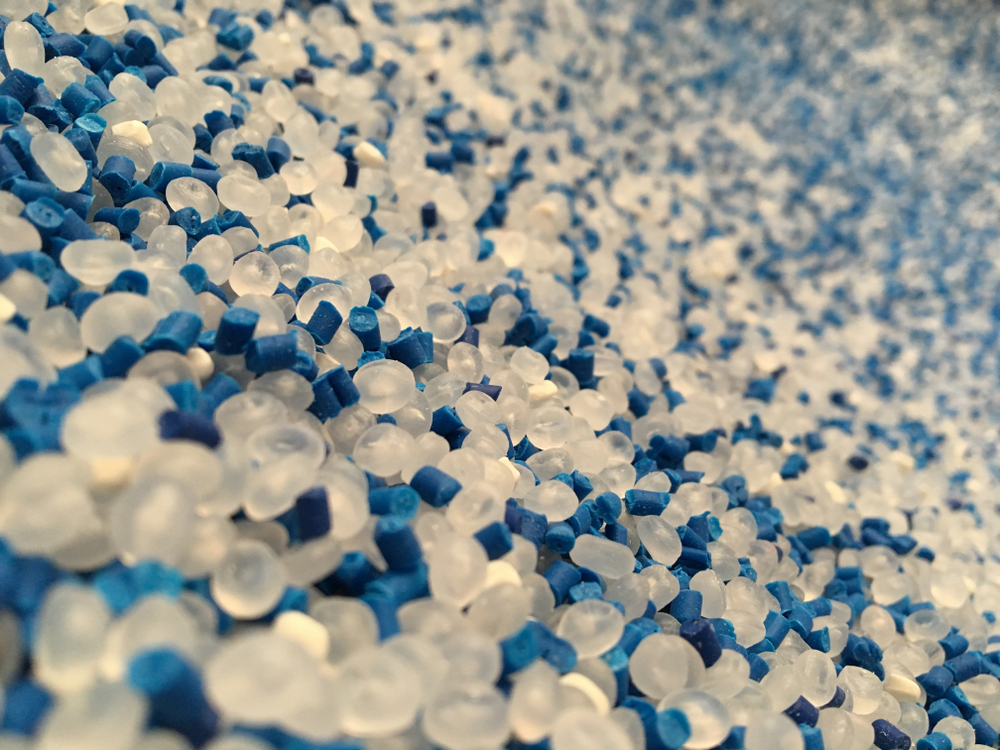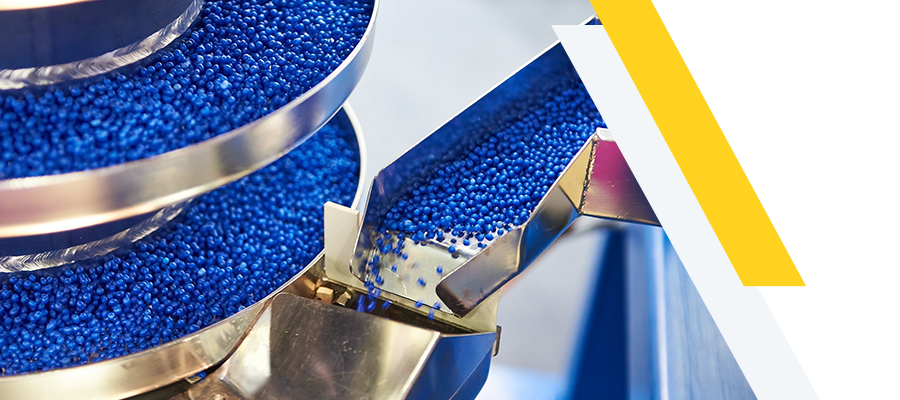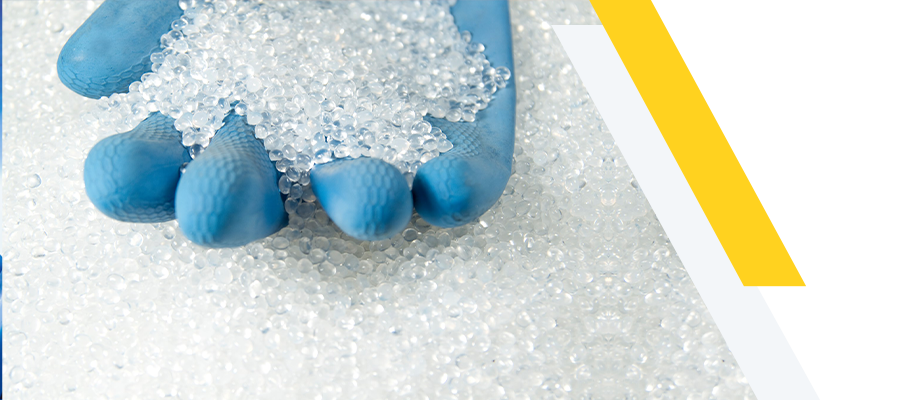
A Deeper Look Into Plastic Manufacturing Industry

Selecting the right raw material supplier can ensure a problem free experience for you. You will avoid a lot of problems such as costly manufacturing delays and quality problems. When it comes to the plastics industry, the decision is even more challenging as there are many plastic resins manufacturers in the market.
In this articel you will learn about the process of manufacturing plastic raw materials, what shapes the plastic industry, what sectors use plastic the most, and how to choose from the many plastic manufacturing companies in the industry?
1-How much is the plastic manufacturing industry worth?
All you have to know is that the global polymer market size is expected to reach over USD 838.5 billion by 2030, and the global demand for plastic products over 2021-2023 will rise by an annual average of 2.0- 3.0 parallel to the recovery of the global economy.
2-What about “Plastics Manufacturing Process”?
- Plastic injection and blow molding are two of the most popular types of plastic manufacturing process to produce high-quality plastic components.
- Polymers are the base component of plastics; these polymers are organic molecules composed of carbon-based units. It was named “polymers” as it produces when molecules monomers form long chains in a process called “polymerization.
- The most common monomers used in plastic production are propylene, chloride, styrene, ethylene, and vinyl. They are obtained from fossil and petroleum fuels, and to a lesser extent biomass, such as plant oils which produce bioplastics.
- Polymers are not enough to produce plastic, we need solvents, which we find in a variety of chemicals, and we need catalysts that are based on metals such as zinc, magnesium, titanium, and aluminum.
- The last step is adding additives that are mixed with polymers for 3 reasons:
- Modifying and improving the properties of the final product such as the flexibility and the durability of the polymer.
- Adding colors to the final product.
- Reducing costs as additives include fillers.
3-What shapes the plastic manufacturing industry (structure, types, and properties of plastics)
Structure of plastic raw materials:
- Plastics are based on carbon atoms that are connected to one another in a chain structure. They can also link to chlorine, nitrogen, oxygen, hydrogen, or sulfur.
- The result after linking is long chains like Pearls-on-pearls string which is termed as Thermoplastic.
- Now we have Thermoplastic which is one of the main highlights of the plastic raw material, which can be recycled because Manufactures can heat and melt it several times.
Plastic types:
We can divide plastics into two types: thermoplastics and thermoset materials.
- Thermoplastics when heated can be molded and deformed, and they are more common than thermosets and include polyethylene (PE), polypropylene (PP), polystyrene (PS), polyethylene terephthalate (PET), polyvinyl chloride (PVC).
- Thermoset materials cannot be remolded after their formation, and include polyurethane (PUR), coatings, and epoxy resins.
Plastic properties:
Plastic has many unique properties because of the structure of the molecules that makes it unique material when it compared with other materials such as metals. Here are the top 6 properties for it:
- Chemically stable and Lightweight
- Water and shock resistant
- Good at electrical insulation
- Easily molded and deformed to many shapes
- Low processing cost
- Transparency
4-What are the industries that use plastic raw materials the most?

Plastic is the cheapest material, so it is perfect for reducing manufacturing costs, so most industries prefer using it, here are the fields that depend on plastic materials:
1-Transport:
In Spain, each car has almost 1700 pieces from plastic of its total 5000 pieces, all transport means have plastic in many of its components, not only cars but also planes and trains.
2-Electronics:
Cables, computers, mobile phones, all these technology Electronics are manufactured with plastics such as PVC.
3-Medicine
Many medical devices are made of plastics, such as capsules, syringes, bags of serum, gloves, serum.
4-Construction
Plastic is a very resistant material which makes it the best material for construction, especially PVC that has been used in certain parts of the building.
5-Agriculture
Greenhouses, pipes for the conduction of water, and tunnels for cropping are some examples of plastic use in the agricultural field, and with the rapid development, the agriculture field demands more quantities of plastics than before.
6-Containers
Polyethylene (PE) is the most type of plastic that can be used to manufacture containers, because it is lightweight, and it doesn’t transmit taste and odor to the product it contains.
Now after you know the industries that depend on plastic, here comes the most important question that we made the article for, how to choose the best plastic raw material supplier, and what are the significant differences you should consider before choosing the best plastic supplier?
First, you have to ask yourself 3 questions:
1-Does the supplier offer the perfect quality?
You must consider the production methodology for the raw material that suits your business, Also the quality is a big deal to concentrate on, so you must check it before choosing the supplier.
2-Does the supplier offer the material you need?
The shape of the material (rod-resin), the technique of the machine (stamped-molded), the chemical that they use, all these specific details of the raw material should be your concern.
3- What are the standards of the polymer supplier?
Make sure that the raw material supplier uses standards that work for your business, remember to check if the supplier uses the ANSI standards or the ISO standards, or another metric.
For example, the medical sector must check that they order the right plastic raw material, as they often require test reports to know if that material matches with their right paperwork and certain standards such as FDA, ASTM, ISO, or SAE standards.
Second, you have to consider these substantive points before picking the supplier:
1-Technical support:
When selecting a plastic supplier, you must think about the in-house technical support, who can help you find the quick answer from experts or engineers about the details of the material, and when you face a specific problem about the design issues for instance.
2-Stability of finances
Financial stability is one of the most important variables that can impact the whole process. If the supplier is stable, he can meet your needs in no time, as he can buy the necessary inventory needs.
3-Sales channels
The best supplier to choose is the one that has multiple sales channels, such as buying via telephone, face-to-face meetings, and online transacting.
4-Strong values& ethics
You have to trust the supplier that you will deal with because ethics and values are the only things you can rely on during the transactions and communications with the supplier, you must ensure that the supplier’s company people will operate with honesty, but how do you know if they have ethics, that will lead us to the next and the last point.
5-Customer Experience
There are many factors that determine if you will face a good customer experience, how quickly can you reach a helpful expert on the phone, are shipments are arriving with the paperwork and on time, are receiving materials are clean and undamaged.
Now let us look at the future of the plastic industry:
.png)
The global plastic market accounted for $439.28 billion in 2021 and is expected to reach $616.82 billion in 2028, at a CAGR of 5.0% in the forecast period (2021-2028).
COVID-19 has affected plastic companies hard in terms of transportation and maintaining a supply-demand and importing raw material.
But because of the rising number of plastic applications, the market growth for plastics is increasing parallel to increasing awareness rates of recycled plastics and bioplastics.
If you want to know more about the products that we provide, click here!
Suggested Blogs

Exclusive vs. Non-exclusive Distributor
GAP Polymers Team
Have you ever wanted to know the difference between the exclusive and the non-exclusive polymer distributers, GAP polymers will help you to know the main differences between them.

An Overview of Polypropylene Thermoforming Process
GAP Polymers Team
PP is the second most popular plastic resin in the world used across many industries. Thermoforming PP has become a process of choice for many manufactures due to its versatility low cost , and more.

Weekly Plastic News & Resins Pricing
GAP Polymers Team
A weekly coverage of all you need to know about the international plastic industry including resin pricing, trends, market insights, and more.

Polymer Industry Updates: What's coming up in 2023?
GAP Polymers Team
2023 is a critical year in the polymer industry at all levels. Global polymers market size is expected to grow finally after the economic recovery from the pandemic.

Top Plastic Raw Material Suppliers
GAP Polymers Team
The polymer industry is facing continues challenges and choosing the best supplier is getting harder. Look no further and explore the full list of the top plastic raw material suppliers.

5 Polymers Used in the Automotive Industry
GAP Polymers Team
Plastics industry has changed the method of manufacturing cars. Now you can explore which material are used in automobiles and how automotive plastics affects demand in the polymer industry.